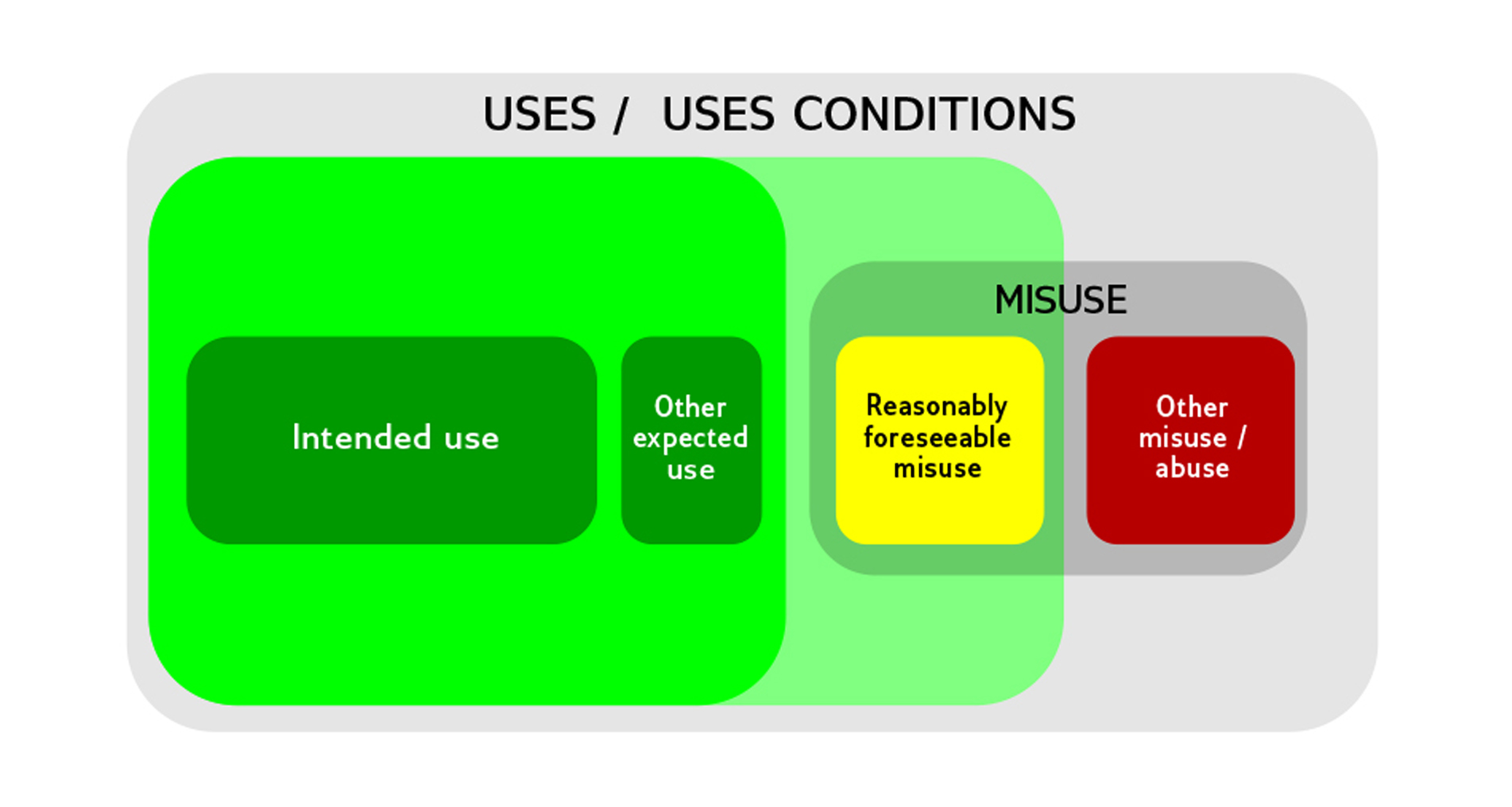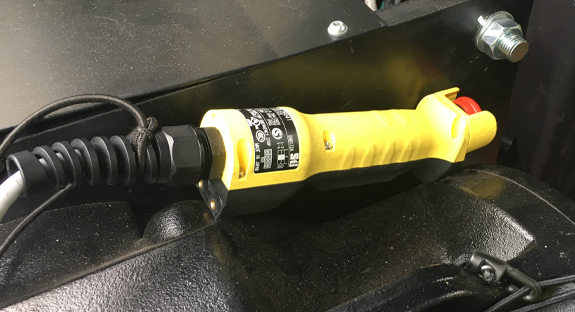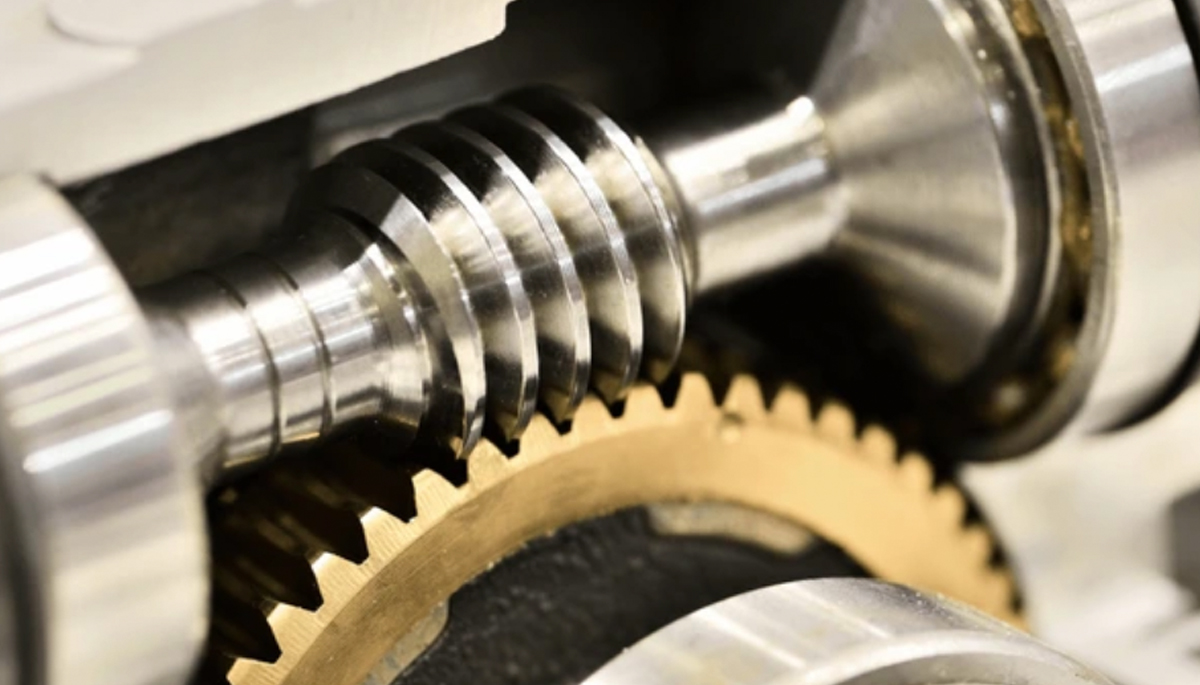The manufacturer’s declared intended use is crucial when deciding whether a control system qualifies for the lifting or motion operations you intend to carry out.
But what exactly is the intended use? What must manufacturers consider when declaring the control system’s intended use?
In the entertainment industry, stage machinery is often the combination of partly completed machinery – placed on the market by manufacturer A – with a control system designed by manufacturer B that is integrated to create completed machinery. When this occurs, and control system manufacturers place products onto the market that are designed and advertised to be integrated with third party machinery, then they must declare the product’s intended use and also declare the Use Case according to EN 17206.
But what is the Intended Use and how is it defined?
Intended Use
The common understanding of intended use is the “use of a product in accordance with the information for use provided by the manufacturer 1 ”, and it should be assuming the control system is properly installed, maintained and used for its intended purpose which is the use the product is designed for 2.
Users can determine the control system’s intended use based on the information supplied by the manufacturer on the label, in the instructions for use, in product markings, or in promotional or sales materials or statements.
In the absence of such information, the Intended Use is the use of the product as can be generally expected. 3
Any assessment of whether a product complies with requirements from a European Directive or Regulations, needs to consider the typical conditions which exist when the product is used; the manufacturer must also take into account the user’s behaviour and the functioning of the product.
VARIABLE SPEED CONTROL SYSTEMS THAT CAN CREATE SCENIC MOVEMENTS – BUT WITHOUT A CLEAR INTENDED USE DEFINITION – CAN BE EXPECTED TO BE USED ON STAGES TO PERFORM MOTION OPERATIONS DURING SHOWTIME.

Other Expected Use
In addition to the Intended Use described in the manufacturer’s information, there can be additional uses that should not be regarded as misuse. For example, some stage machineries designed to move equipment with people in the hazard zone, could also be used to move performers if additional safety conditions or protective measures are implemented.
Providing user training is not mandatory, but in some cases user training must be given. When provided, this must be considered as part of the information for use. For some products, mainly in the professional area, user training is commonly applied. User training should be seen as additional information which helps describe a product’s Intended Use in addition to the information or instructions in the user manual.
Reasonably Foreseeable Use
This term can be often found in different EU/UK Directives and Regulations, and the way of using it (e.g. conditions of use which can be reasonably foreseen, reasonably foreseeable conditions, realistic assumptions about normal conditions and purposes of use) and the related meaning may be different, which confuses the reader and makes it hard to gain a common understanding of this term.
First, Reasonably Foreseeable Use must always include the Intended Use and Other Expected Use.
When designing and constructing machinery and drafting instructions, the manufacturer or their authorised representative must envisage not only the intended use of the machinery but also any reasonably foreseeable misuse thereof.
What is reasonably foreseeable use?
It is the use of the product inside or outside its intended purpose, provided that it could reasonably be foreseen.
Usually, the manufacturer will define stage machinery or control system working parameters, probably including limit values, that can be used to describe reasonably foreseeable use. Yet, the manufacturer may not be in a position to provide safety-related devices to set, configure or check the parameters for specific situations when a product is used.
Depending on the product under consideration, elements such as the environmental conditions, system installation parameters and technical circumstances may need an assessment to determine the reasonably foreseeable use (conditions). Hence, the assessment of whether a specific use can be regarded as a reasonably foreseeable use should account for the behaviour of all types of users, including likely ways to use products. It can also depend on the persons that are expected or allowed to use the product (for example, professional versus ordinary people using the product).
CONTROL SYSTEMS WITH UNRATED SAFETY FUNCTIONS SHOULD NOT BE PLACED ONTO THE MARKET IGNORING THE REASONABLE FORESEABLE USE.
Misuse
The misuse is the use of a product which is NOT in accordance with the information for use provided by the manufacturer and is generally outside the normally expected use of a product.
- Misuses are either Reasonably Foreseeable Misuse or other misuse such as intentional abuse.
- Misuse is any use of the product in a way that is not intended by the manufacturer, or which is unlawful. Misuse can either be intentional or unintentional.
Reasonably Foreseeable Misuse
This is the use of a product which is not in accordance with the information for use provided by the manufacturer, but which could be known or anticipated based on common knowledge of the product and conditions of use that could result from lawful and readily predictable human behaviour 4.
It can also be determined as “the use of a product in a way not intended by the manufacturer, but which is the result of the use in good faith”.
Reasonably Foreseeable Misuse can either be intentional or unintentional, but the user does not have the intention to use the product in an unlawful manner.
Assessing whether a specific use can be deemed a reasonably foreseeable misuse should consider the type of users; for example, ordinary persons, instructed persons, skilled persons and professional users.

So the reasonably foreseeable misuse can be predicted using the same rationale utilised to determine the reasonably foreseeable use.5
USERS MAY UNINTENTIONALLY MISUSE A PRODUCT WHEN THE INTENDED USE DEFINITION IS NOT CLEAR, ESPECIALLY ON PRODUCTS THAT DELIBERATELY DO NOT PROVIDE LIMITATIONS AND ALLOWANCES. IN THOSE CASES, THE MANUFACTURER WILL BEAR THE LIABILITY OF THE MISUSE.
Other Misuse: Abuse
The last approach is Abuse, which means the use of a product in a manner the manufacturer can’t foresee or reasonably know, or where the user is fully aware that the use is unlawful.
In contrast to reasonably foreseeable misuse, this kind of misuse is the “use of a product in bad faith”. In this case, the user or another party, intentionally misuses the product beyond the scope of reasonable use or in an unlawful or illegal manner. These situations are not considered reasonable or lawful and therefore are a clear abuse of the product.
IT IS CONSIDERED ABUSE WHEN A CONTROL SYSTEM IS USED AGAINST THE INSTRUCTIONS, BUT ONLY WHEN THE USE IS WELL EXPLAINED AND THE DESIGN TAKES THE FORESEEABLE MISUSE UNDER CONSIDERATION.
Conclusions
It is not infrequent to find, in the market, control systems advertised and promoted as stage machinery control systems, clearly designed to be integrated with a third party lifting mechanism, that fails to define the intended and reasonably foreseeable use and misuse. For laziness, lack of competence or more likely due to a potential economic advantage, such products are often inadequate for the general expected purpose, and they pose risks to the safety of those exposed to a hazardous event.
Since the EU and UK regulations are crystal clear about the manufacturer’s obligations concerning use, reasonable intended use or misuse, it is not difficult to predict what conclusion the Court of Law may reach, in the event of an accident caused by a product whose only misfortune was of being used as generally expected.
References
1. Machinery Directive 2006/42/EC Chapter 1.1.1, indent (h). ↩
2. The Supply of Machinery (Safety) Regulations, Interpretation, chapter 2, page 3, paragraph 5. ↩
3. CEN New Guidance CEN-CLC/ BTWG 15 ‘Use conditions in standards’ approved by CEN and CENELEC Technical Boards on 2021-08-11. ↩
4. Machinery Directive 2006/42/EC chapter 1.1.2 indent (c) When designing and constructing machinery and when drafting the instructions, the manufacturer or his authorised representative must envisage not only the intended use of the machinery but also any reasonably foreseeable misuse thereof. ↩
5. Machinery Directive 2006/42/EC chapter 1.7.4.1 indent (c) The contents of the instructions must cover not only the intended use of the machinery but also take into account any reasonably foreseeable misuse thereof. ↩





